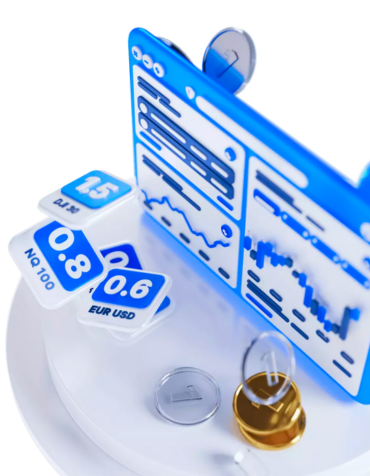We round up the best brokers that we believe offer best value for forex traders.





Trading the GBPBHD forex pair involves buying or selling it in the foreign exchange (forex) market. Here are the basic steps to trade GBPBHD:
To trade any forex pair, including GBPBHD, you'll need to open an account with a reputable forex broker. Ensure that the broker offers access to this specific GBPBHD pair.
Deposit funds into your forex trading account. The amount you deposit will determine the size of your trading positions.
Before making any trades, perform a thorough analysis of the GBPBHD pair. This analysis typically involves fundamental analysis (economic data, interest rates, geopolitical events) and technical analysis (price charts, indicators) to determine your trading strategy.
Most brokers offer trading platforms that allow you to execute trades. Familiarize yourself with the platform's interface and tools.
Choose whether you want to buy (long) or sell (short) the GBPBHD pair based on your analysis. Enter the trade order on your trading platform, specifying the amount (lot size) you wish to trade.
Executes the trade immediately at the current market price.
Sets a specific price at which you want your trade to be executed.
Sets a price at which your trade will be triggered if the market moves in a certain direction.
To manage risk, consider setting stop-loss orders to limit potential losses and take-profit orders to lock in profits at a certain price level.
Once your trade is executed, monitor the GBPBHD pair's price movement. Keep an eye on news and events that may impact the exchange rate.
When you achieve your trading objectives, either manually close the trade or wait for your predetermined take-profit or stop-loss levels to be reached.
After closing your trade, assess the outcome. Review your trading strategy and learn from both successful and unsuccessful trades to improve your skills.
Always practice proper risk management. Never risk more than you can afford to lose, and consider using leverage cautiously if available.
For the breakout strategy, we're focusing on finding those key levels of support and resistance in the GBPBHD currency pair. When the price breaks above a resistance level or below a support level with lots of volume, that's a sign that a breakout might be happening. With this strategy, you'll want to wait for those breakouts and then enter trades in the direction of the breakout. To manage your risk, make sure to place stop-loss orders above or below those breakout levels.
Now let's move on to the moving average crossover strategy. This one involves using two moving averages - one that looks at shorter-term trends (like 20 days) and another that focuses on longer-term trends (like 50 days). When the shorter-term moving average crosses above the longer-term one, it gives us a buy signal and suggests an upward trend could be forming. On the flip side, if the shorter-term moving average crosses below the longer-term one, it generates a sell signal and indicates a potential downward trend. You can use this crossover as your entry point for trades and set your stop-loss orders accordingly.
Lastly, we have the Fibonacci retracement strategy. Here we're using Fibonacci ratios (like 38%, 50%, or 61%) to identify possible levels of support or resistance using the Fibonacci retracement tool. The idea is to look at recent major highs and lows in GBPBHD's price chart and apply these Fibonacci retracement levels to find potential entry points during pullbacks within an overall trend. To increase your chances of success, keep an eye out for confluence between Fibonacci retracement levels and other technical indicators like trendlines or moving averages.
That wraps up our discussion on these three trading strategies! Remember to do further research before implementing any strategies into your own trading plan.